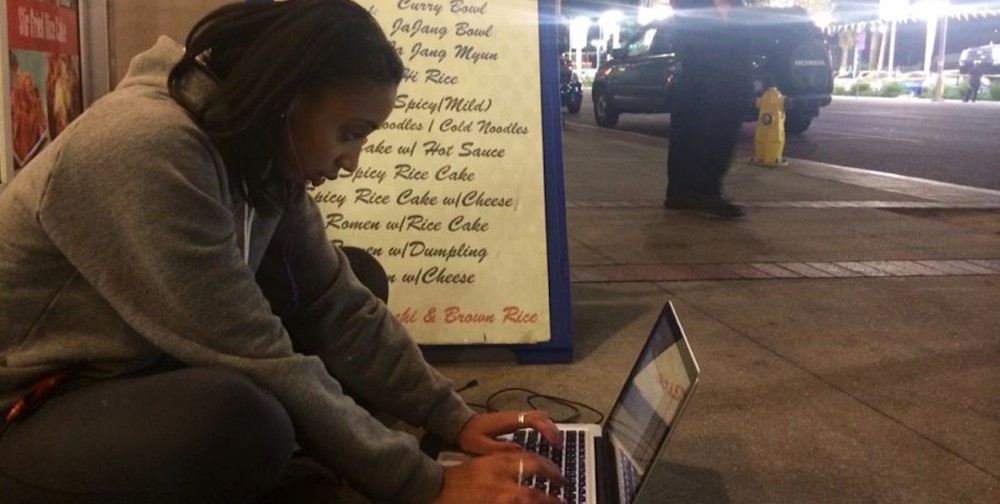“In America the President reigns for four years, and Journalism governs forever and ever” – Oscar Wilde
As we wrap up this first week in Donald Trump’s America, the media has the most important decision to make ahead.
Right now, journalists are deciding how to cover the U.S. electorate during the Trump administration, one in which 25.5 percent of eligible American voters overwhelmingly located in the heartland and Rust Belt carried the former reality TV star into the highest office in the land.
Reporters realized during this election that these voters live in culturally and economically different worlds from their so-called “elite circles” within major U.S. cities like New York, Washington D.C. and Los Angeles.
The Trump supporters’ decision to see past their candidates’ racist and xenophobic statements — calling some Mexican immigrants rapists, saying African Americans were “living in hell” and there should be a “total” shutdown of Muslims coming into the country, to name a few — surprised many in the media on Election Night. As the shock waned, it’s turned into a collective soul-searching among journalists.
Newsrooms are recalibrating themselves. The emerging narrative among reporters on Twitter to CNN is that to adequately cover “real America” they must embed themselves in the pockets of the country that are reeling from “economic anxiety”.
This effort by journalists to shed their perceived elitism looks like they’ll be leaning on more coverage from the country’s overly white, rural and suburban areas. This will further remove reporters from people of color concentrated in cities, who also live under clouds of economic anxiety with an additional concerns over race relations and immigration policies. For this reason, the intersectionality that people of color live in cities can give journalists a better pulse on what “real America” looks and feels like.
****
The journalism industry is now largely operating in cities like New York, Washington, D.C. and Los Angeles, but in national coverage, the industry never turned its attention to these cities’ black, Latino and Asian American populations in complex ways.
Partially, this speaks of the lack diversity in the newsroom setting. However, the notion that the nation’s newsrooms are whiter than the country’s population isn’t groundbreaking or fresh information. Journalists of color account for 17 percent of newsrooms, according to 2016 data from the American Society of News Editors’ annual survey on diversity.
Reporters often live in a media bubble insulated from the multiculturalism that American cities provide. Yes, there has been standout work from journalists covering the election that tapped into people of color’s theories and insights about the race, candidates’ policies and the outcome. However, that work was not nearly sufficient.
Cities are hubs of multicultural ideals, which is not mutually exclusive of the alleged elitism plaguing modern reporters. Journalists could harness this power of location if they wanted. Having been a beneficiary of living and reporting in the country’s three largest cities – Chicago, then Los Angeles and now New York – I’ve seen this firsthand.
Chicago – with 67 percent of its population being minorities – was where I saw the multiracial UniverSoul Circus every year in Washington Park, sharpened my Chinese speaking skills by going to Chinatown markets and watched in pride as a Windy City community activist became the country’s first black president.
When I moved to Los Angeles for college, I reported on the same street corners where the fires from the 1992 civil unrest flared while I covered the protests that erupted in 2014 in response to the killing of Michael Brown in Ferguson, Missouri.
Now, as a transplant to New York’s East Harlem — a heavily Puerto Rican part of Manhattan – I’m picking up bits of Spanish inside local bodegas and learning that my presence in the neighborhood is yet another wave of diversity that this area has seen over the decades.
Living and reporting in these cities, all providing rich populations of people of color, can give journalists views into the anxieties, fears and tepid hopefulness that America is now feeling with our new president-elect.
****
By 2044, the white population in the U.S. will be the minority, according to the U.S. Census Bureau. The change is already in process. The majority of babies born in the country are from minority groups. The demographics in the so-called elite cities are reflecting this demographic shift. Cities are not liabilities to understanding “real America” in this post-election season. In fact, they are representative of it.
This task of covering Trump’s America that will eventually become more and more diverse won’t be simple. What’s easy is deciding to cover one group and not so much the other. Plus the decision is being made at a time when resources and reporters in the newsrooms are already spread thin. Yet the need to do less with more does not mean choosing to cover Trump supporters over covering historically disenfranchised ethnicities.
Now, more than ever, is an opportunity to gauge the heartbeat of the oppressed, the concerns of the diverse minds of America and the rhetoric coming from all spectrums of the country.
The beauty will be that it won’t be simple, but this effortless and unchallenging decision is necessary to telling our nation’s entire narrative.
